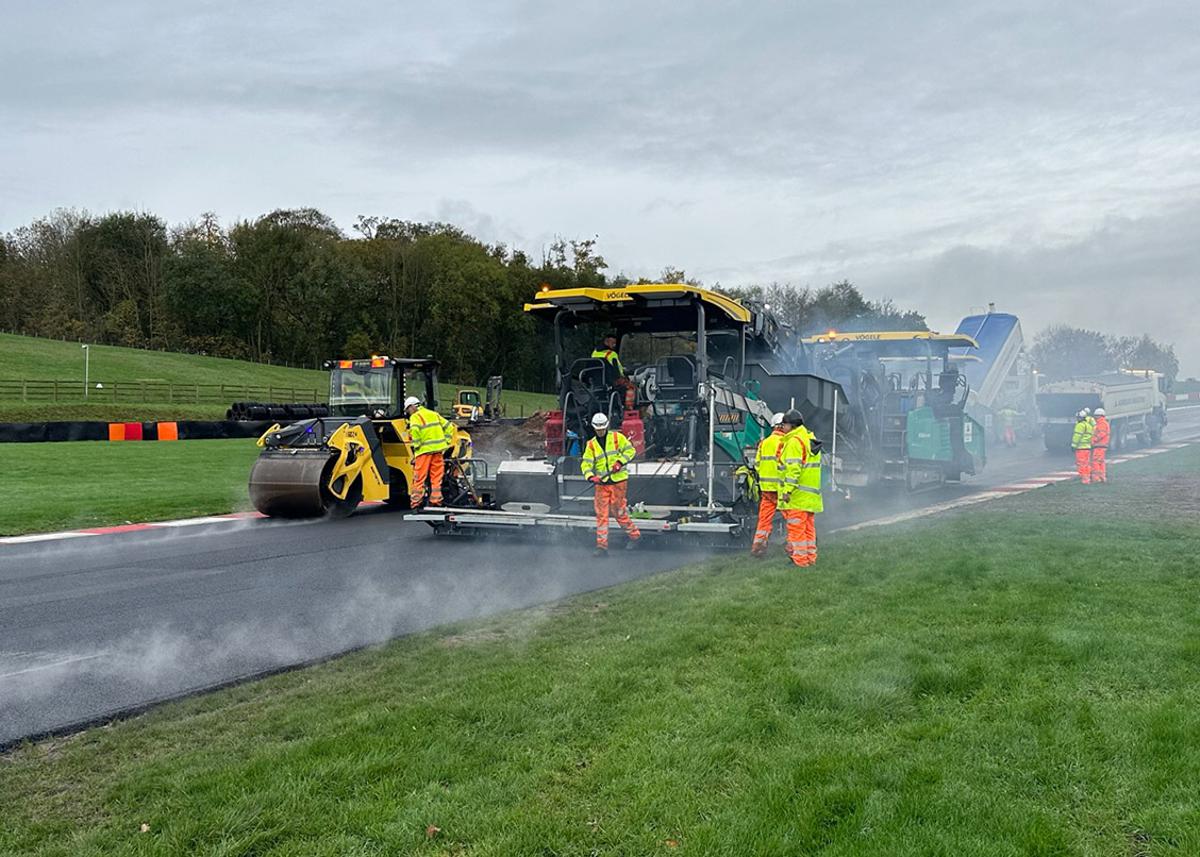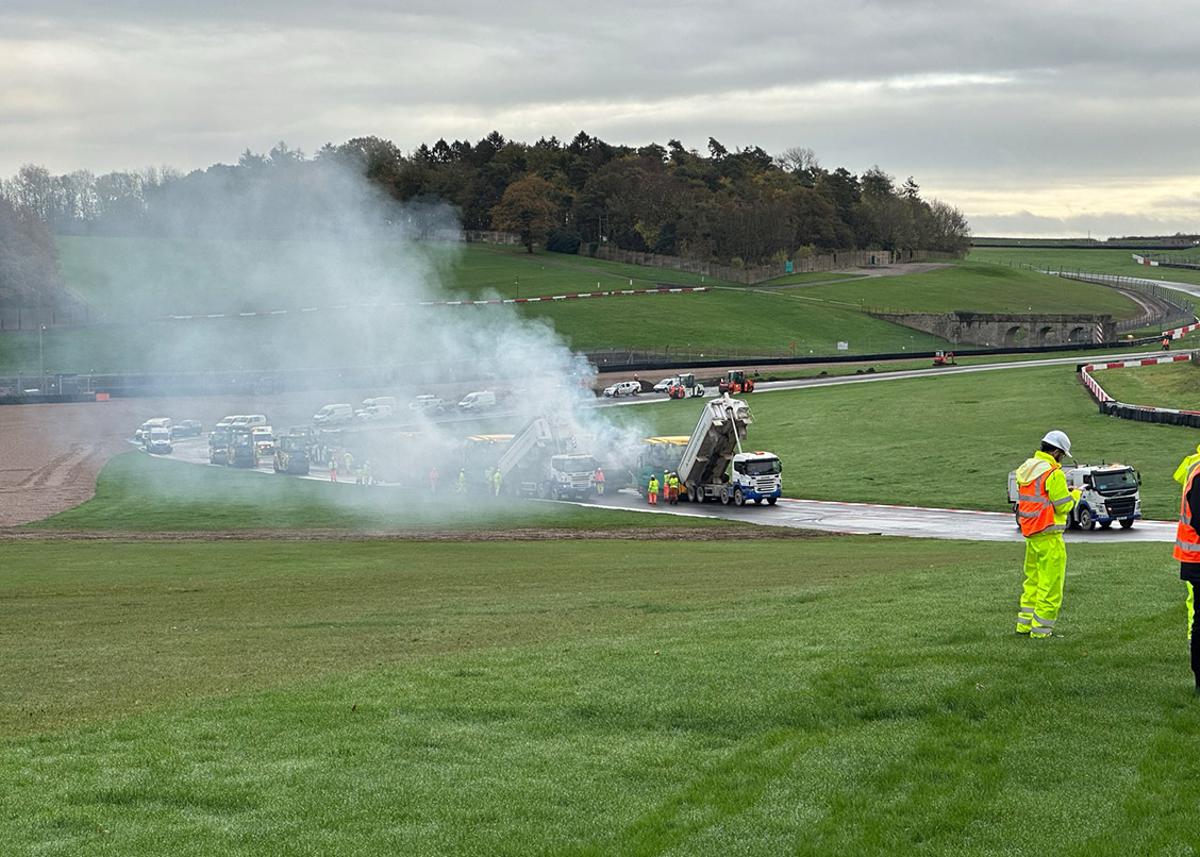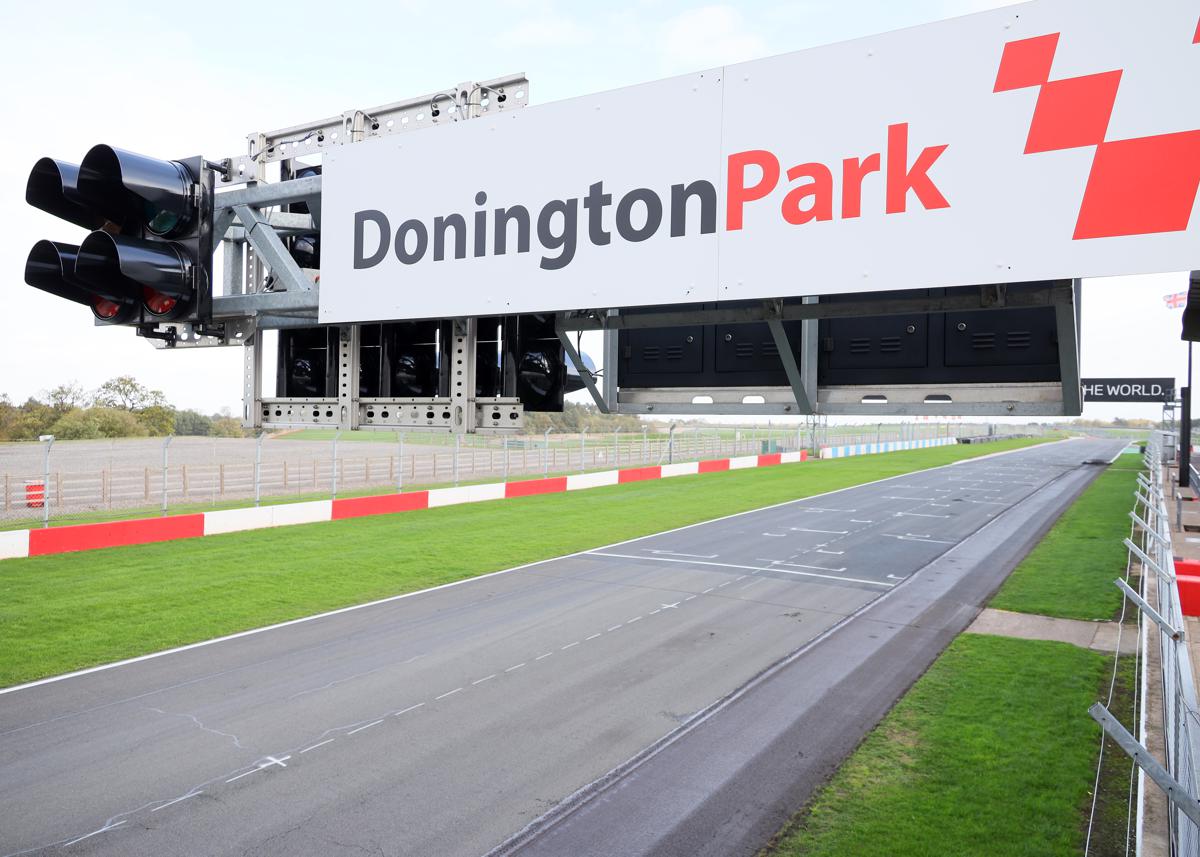Aggregate Industries takes pole position after resurfacing Donington Park
Donington Park is one of the world’s most iconic race venues, hosting some of motorsport’s most prestigious national and international events. Since being acquired by MotorSport Vision Ltd., in 2017, significant investment has been made into the venue.
In 2022, MotorSport Vision set out to find a partner to resurface the prestigious circuit.
Leading construction materials supplier Aggregate Industries was selected to complete the works, which included the removal and replacement of more than 6,700 tonnes of asphalt.
Here, Neil Leake, National Technical Manager and Jonathan Falls, Area Manager – Surfacing Solutions at Aggregate Industries, talks through the process of bringing the project to fruition and how both technical capability and advanced technology was essential to the success of the outcome.
A complex process
The resurfacing of any major project requires meticulous planning and a true collaborative approach across all involved contractors. Early on, it was clear that the works required a bespoke solution, which would meet the overall design requirements of the track.
Before submitting our response to the brief, it was key for us to fully understand the exacting requirements of the works set out to ensure we had the relevant and technical expertise available on-hand. As part of this process, we spent time liaising with suppliers that would become key contractors in the project and building a highly experienced team to deliver the works.

Early Contractor Involvement
Collaboration has been a major success factor in the project. Early Contractor Involvement (ECI) is something we pride ourselves on at Aggregate Industries, however with Donington it was essential.
This phase of the project saw us work closely with MotorSport Vision and track designers Driven International to identify and mitigate risks, with a detailed methodology produced to ensure we were able to meet the brief’s tight construction programme without delay.
Track profiling and material trials
Once ECI was complete, we carried out complex Light Detection and Ranging (LiDAR) laser scanning on the 2.5 mile track to help us understand accurate terrain and elevation data not visible to the naked eye. This provided us with a complex 3D model that mapped the exact profile of the track, highlighting surface bumps and dips that required remediation.
In tandem with this, we completed both on and off-site material trials – both in the pit lanes and at our asphalt plants – to allow us to test-run our recommended material, our equipment and our specialist team working on the project.
Prior to this, the team at our R&D facility at Moordale undertook mix verification assessment using the agreed aggregates and bitumen chosen for the scheme. This verified all the constituent parts that made up our SuperPrixmat™ Ultra asphalt and assessed them against scheme requirements.
Following this process an off-site trial was undertaken at our Croft Quarry to assess both the manufacturing and installation properties. This was then complemented with an on-site trial; held within the pit lane of the track, that assessed all aspects of the main track requirements.

Cold milling
Before getting to work on laying the new surface, the existing track needed to be removed. The cold milling works were done using the latest technology, together with the data collected from the LiDAR scans.
This was done in a two-stage operation, firstly using the Topcon Smooth Ride system in partnership with our supply chain partner PowerPlane to profile against the LiDAR scan; then applying a fine milling drum on the planer to fine tune the surface and ride profile. This meant that in some areas of the track, a greater volume of asphalt was removed, whilst there was very little to plane in others.
This part of the works essentially changes the profile of the track; something that was specified by Driven International in the briefing and ECI process. During cold milling, we found that there were a series of irregularities throughout the track that really unsettled the course, which led to a greater volume of patching works required.
Scanning, milling and resurfacing works
Once the cold milling works were completed their works, we carried out secondary LiDAR scanning to ensure we had achieved the tight tolerance required by MotorSport Vision and Driven International.
To carry out the works, we worked closely with a range of trusted and expert suppliers over the course of one week using up to three high-tech pavers in echelon; two of which were supplied from Germany. This ensured a seamless consistency in the final surface of the track to improve the ride profile and eliminate any longitudinal joints around the track.
We used shuttle buggies to feed the pavers, which is something we often do on precision projects such as these to ensure the pavers don’t need to stop, further guaranteeing continuous and smooth paving.

Utilising quality products
We recommended the use of our well-established SuperPrixmat™ Ultra surfacing material for the works, which is specifically designed for demanding high-performance motor racing circuits and has been used on many of the UK’s major performance tracks.
The aggregates used within the product provides a high grip surface solution for high-speed racing.
To meet the requirements for the quantity of product stipulated in the brief, we chose to utilise two of our supply plants: Bardon Hill in Leicestershire and Tinsley on the outskirts of Sheffield, each managed by a logistics coordinator on-site. This meant we could provide a continuous supply of product, allowing us to complete the scheme at a consistent pace.
In addition to more than 5,000 tonnes of SuperPrixmat™ Ultra, we also used 846 tonnes of binder course and 740 tonnes of stress-absorbing membrane interlayer, SuperSAMI, which is used to reduce reflection cracking.
Advanced technical capability and advanced technology
The essential and extensive track maintenance works were completed over 22 days and represent the most significant improvement works at the venue in 20 years. Working together with both MotorSport Vision and an extensive supply chain required exacting levels of technical capability combined with innovative solutions from across the team.
This included the use of LiDAR laser scanning, which was used to produce digital recreations of the track. We used this technology several times during the works: to determine the initial profile of the track; to ensure cold milling works were completed to specification; and to re-profile the track once surfacing was complete.
The brief called for very specific levels of grip and ride profile. Through an optimum blend of high performance aggregates and advanced construction methods used to lay the new track, a superior level of grip (0.6) was achieved immediately. An average International Roughness Index (IRI) of less than 1.0 was specified, however a tight tolerance of 0.3 was achieved around the track – an exceptional result.
This was accomplished through a combination of specialist equipment – including the Topcon SmoothRide system used on the Powerplane cold milling equipment and the WIRTGEN SUPER 2100-5i tracked paver with extension boxes (which were being used in the UK for the first time), MT3000 3i feeder paver and MultiPlex Averaging Beams. The longitudinal surface joint was treated with a joint heater whilst paving in echelon using the advanced technology from Thermal Road Repairs Limited, further enhancing the quality of the longitudinal joint and surface finish.
Quality control at all stages was monitored using Aggregate Industries’ AIT system, in partnership with HDS. This digitally monitors all material movements from plant to site, measures material temperatures throughout the process and records the compaction process. The final data was mapped out across the track giving MSV a digital quality record and ‘as built’ data for future use.

A collaborative effort
The successful resurfacing works at Donington required a true collaborative approach across all involved contractors – from the initial ECI through to the chosen delivery partners.
With the delivery timeline tight, it was crucial for us to enlist the right partners from the earliest stage, selecting both an experienced and trusted supply chain to work together with us from the response stage.
Our key supply chain partners included world-leading organisations in their respective fields, including Powerplane, TopCon, WIRTGEN, Thermal Road Repairs Ltd, HDS and RoadGrip, who worked with us to complete the track markings.
A stand-out result
Resurfacing works of this nature are a challenging operation across the board; but what we have achieved at Donington is a bespoke and highly sophisticated solution that meets the durability requirements of one of the world’s most famous racetracks – on budget, and on time.
The new surface on the course has received praise from the UK’s top British Touring Car Championship Drivers and Bennetts British Superbike Championship riders, with comments on increased grip, in both dry and wet conditions, and smoothness of the course – feedback we’re delighted with.



















